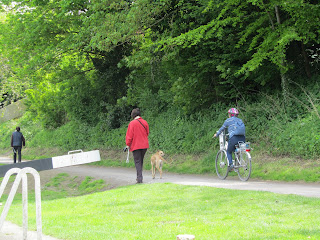Caen Hill Locks
This flight of 16 locks may be the most impressive anywhere on the UK's waterways.
They were engineer John Rennie's solution to climbing the very steep hill in Devizes, and were the last part of the 87 mile route of the Kennet & Avon Canal to be completed.
The dramatic change in height of the land at Caen Hill resulted in the need for 16 locks to be built in close succession. Because of the steepness of the hill there was not space to use the normal arrangement of water pounds between the locks and so engineer John Rennie had to build unusually large side ponds to replenish the water in each lock after use.
The locks and ponds were the last stretch of the Kennet & Avon Canal to be built in 1810 and form part of a longer 29-lock flight at Devizes, all packed into just over two miles. They are designated as a Scheduled Ancient Monument – the same level of heritage protection given to Stonehenge.
The 29 locks have a rise of 237 feet in 2 miles (72 m in 3.2 km) or a 1 in 44 gradient. The locks come in three groups. The lower seven locks, Foxhangers Wharf Lock to Foxhangers Bridge Lock, are spread over 1.2 km. The next sixteen locks form a steep flight in a straight line up the hillside. Because of the steepness of the terrain, the pounds between these locks are very short. As a result, 15 locks have unusually large sideways-extended pounds, to store the water needed to operate them. A final six locks take the canal into Devizes.[1]
Whilst the locks were under construction a tramroad provided a link between the canal at Foxhangers to Devizes, the remains of which can be seen in the towpath arches in the road bridges over the canal.[2] A brickyard was dug to the south of the workings to manufacture the bricks for the lock chambers and this remained in commercial use until the middle of the 20th century.
Because a large volume of water is needed for the locks to operate, a back pump was installed at Foxhangers in 1996 capable of returning 32 million litres of water per day to the top of the flight, which is equivalent to one lockful every eleven minutes.[3]
In the early 19th century, 1829–43, the flight was lit by gas lights.[4]
The locks take 5–6 hours to travel in a boat and lock 41 is the narrowest on the canal.[5]
To give you some idea of what is involved watch this youtube video
www.youtube.com/watch?v=bD4UTykg5E8
For our 'flight' we had the perfect day. My friends Dave and Lesley arrived and we started off up the flight at 10.15. There was little traffic on the flight so we were able to make good progress.
Dave was keen to steer, so after some rudimentary instructions I left him in charge whilst I was able to assist with some of the locks.
Unfortunately I left my camera on board and Dave also took command of this. These are some of his photos.....
We were a great team! And many thanks to Vinnie too.
Happy Bunny
At the top of the flight we moored up at the Black Horse for a well-earned meal and drinks
Tara not being left out had sensed the presence of dog treats behind the bar

















Did you leave John behind lol????
ReplyDeleteHi Anne
ReplyDeleteWaiting to see next installment